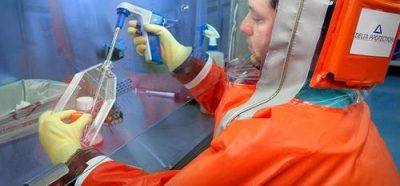Scientists Freak Out Over Pandemic Potential of Genetically Engineered Smallpox

Following the release of a paper earlier this year which describes how researchers stitched together segments of DNA in order to revive horsepox – a previously eradicated virus, scientists have been flipping out over the possibility that bad actors may use the study as a blueprint to revive smallpox.
The disease killed an estimated 300 million people before the World Health Organization deemed it eradicated following a long vaccination campaign. Thus, the publication of a method for reviving a closely related disease has understandably raised some red flags within the scientific community, reports futurism.com.
Critics argue that the paper not only demonstrates that you can synthesize a deadly pathogen for what Science reported was about US$100,000 in lab expenses, but even provides a slightly-too-detailed-for-comfort overview of how to do it.
Some of the horsepox scientists’ coworkers are still pretty upset about this. PLOS One’s sister Journal, PLOS Pathogens, just published threeopinionpieces about the whole flap, as well as a rebuttal by the Canadian professors.
Overall, everyone’s pretty polite. But you get the sense that microbiologists are really, really worried about someone reviving smallpox. –futurism.com
Prior to its eradication, smallpox was primarily spread by direct and fairly prolonged face-to-face contact between people. Once the first sores appeared in the mouth and throat (the early rash stage), they were contagious until the last smallpox scab fell off. According to the CDC,
“these scabs and the fluid found in the patient’s sores also contained the variola virus. The virus can spread through these materials or through the objects contaminated by them, such as bedding or clothing. People who cared for smallpox patients and washed their bedding or clothing had to wear gloves and take care to not get infected.”
What would a smallpox bioterror attack look like? Via the CDC:
Most likely, if smallpox is released into the United States as a bioterrorist attack, public health authorities will find out once the first person sick with the disease goes to a hospital for treatment of an unknown illness. Doctors will examine the person and use tools developed by CDC to figure out if the person’s signs and symptoms are similar to those of smallpox. If doctors suspect the person has smallpox, they will care for the person and isolate them in the hospital so that others do not come in contact with the smallpox virus. The medical staff at the hospital will contact local public health authorities to let them know they have a patient who might have smallpox.
Local public health authorities would then alert public health officials at the state and federal level, such as CDC, to help diagnose the disease. If experts confirm the illness is smallpox, then CDC, along with state and local public health authorities, will put into place their plans to respond to a bioterrorist attack with smallpox.
Kevin Esvelt, a biochemist at MIT, wrote on Thursday that the threat is so significant that “it may be wise to begin encouraging norms of caution among authors, peer reviewers, editors, and journalists.”
At present, we decidedly err on the side of spreading all information.
Despite entirely predictable advances in DNA assembly, every human with an internet connection can access the genetic blueprints of viruses that might kill millions.
These and worse hazards are conveniently summarized by certain Wikipedia articles, which helpfully cite technical literature relevant to misuse.
Note the deliberate absence of citations in the above paragraph. Citing or linking to already public information hazards may seem nearly harmless, but each instance contributes to a tragedy of the commons in which truly dangerous technical details become readily accessible to everyone.
Given that it takes just one well-meaning scientist to irretrievably release a technological information hazard from the metaphorical bottle, it may be wise to begin encouraging norms of caution among authors, peer reviewers, editors, and journalists. –PLOS
Esvelt blamed the media for amplifying the negative potential of smallpox synthesis as well:
DNA synthesis is becoming accessible to a wide variety of people, and the instructions for doing nasty things are freely available online.
In the horsepox study, for instance, the information hazard is partly in the paper and the methods they described.
But it’s also in the media covering it and highlighting that something bad can be done. And this is worsened by the people who are alarmed, because we talk to journalists about the potential harm, and that just feeds into it. –MIT News
The Canadian professors, meanwhile, shot back at their critics – arguing that smallpox was bound to be synthesized at some point anyway.
Realistically all attempts to oppose technological advances have failed over centuries.
We suggest that one should instead focus on regulating the products of these technologies while educating people of the need to plan mitigating strategies based upon a sound understanding of the risks that such work might pose.
In these discussions, a long-term perspective is essential. –PLOS
In short, prepare for the Jurassic Park of deadly pathogens and their pandemic potential.
*
Note to readers: please click the share buttons above. Forward this article to your email lists. Crosspost on your blog site, internet forums. etc.

